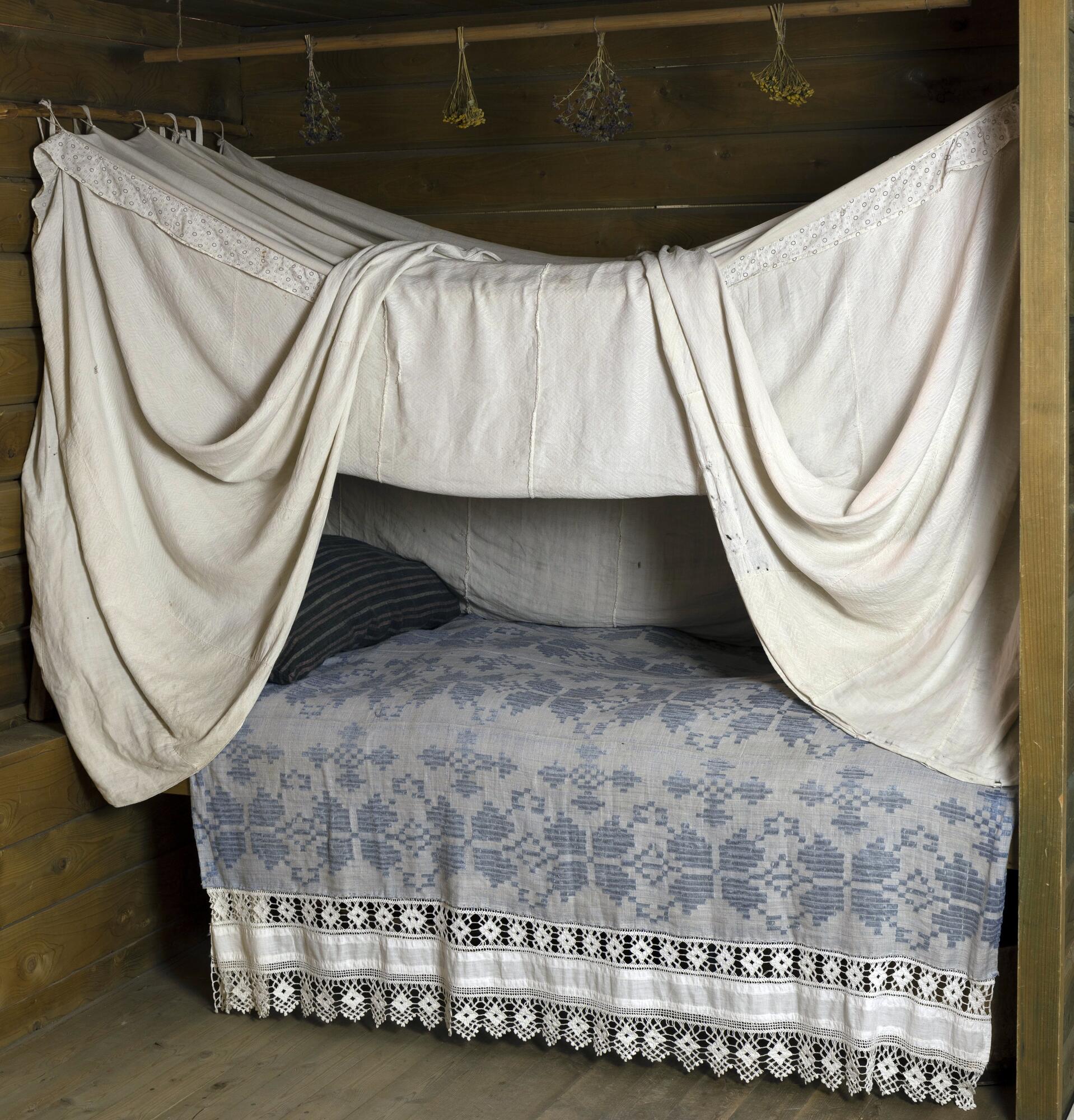A bed curtain is a large bed hanging made of fabric that is attached over the bed. The Glazov Museum of Local Lore presents an Udmurt bed curtain — “yn”, made at the turn of the 20th century. It was brought into the house by the bride and hung over the bed of the newlyweds. They slept under it at home, and brought it to the fields during summer work. The curtain protected their bed from light, dust and insects; however, it was not its only purpose.
This simple household item reveals the features of an Udmurt rite. In difficult climate conditions, it was possible to survive only by working together, constantly helping each other, hence the traditional Udmurt communality and co-operation, which is especially clearly reflected in the national custom — veme, which means help. For particularly difficult jobs, the head of the family announced a veme, calling for all friends and relatives to help. Under veme, a strict division of labor was observed. Men engaged in hard physical work, and women collectively scutched flax or hemp, spun, washed yarn, and embroidered.
One of the most fascinating types of veme is the “yn vuron” rite — the rite of sewing a bed curtain. When a young Udmurt woman was preparing for her wedding, she invited her friends and relatives to sew a curtain, which was an obligatory part of the Udmurt dowry. Despite the name of the ceremony, not only the bed hanging was sewn, but also clothes — a shirt for the groom and caftans for the bride. The top part and three sides of the bed curtain from the collection of the Glazov Museum of Local Lore was sewn from a simple canvas, and the front side was made of a special white canvas, which the craftsmen wove using several types of interlacing.
The bridesmaids sewed colorful braids, strips, beads and silver coins to the bed curtain, saying wishes to the future family. The finished item was displayed in the middle of the yard, and the older representatives blessed the porridge, which was specially cooked, and put money on the curtain. After that, boys and girls sat down under the curtain, they were given porridge and coins. Thus, they wished the future family to have many children. The bed curtain was an amulet and talisman of the young couple.
This simple household item reveals the features of an Udmurt rite. In difficult climate conditions, it was possible to survive only by working together, constantly helping each other, hence the traditional Udmurt communality and co-operation, which is especially clearly reflected in the national custom — veme, which means help. For particularly difficult jobs, the head of the family announced a veme, calling for all friends and relatives to help. Under veme, a strict division of labor was observed. Men engaged in hard physical work, and women collectively scutched flax or hemp, spun, washed yarn, and embroidered.
One of the most fascinating types of veme is the “yn vuron” rite — the rite of sewing a bed curtain. When a young Udmurt woman was preparing for her wedding, she invited her friends and relatives to sew a curtain, which was an obligatory part of the Udmurt dowry. Despite the name of the ceremony, not only the bed hanging was sewn, but also clothes — a shirt for the groom and caftans for the bride. The top part and three sides of the bed curtain from the collection of the Glazov Museum of Local Lore was sewn from a simple canvas, and the front side was made of a special white canvas, which the craftsmen wove using several types of interlacing.
The bridesmaids sewed colorful braids, strips, beads and silver coins to the bed curtain, saying wishes to the future family. The finished item was displayed in the middle of the yard, and the older representatives blessed the porridge, which was specially cooked, and put money on the curtain. After that, boys and girls sat down under the curtain, they were given porridge and coins. Thus, they wished the future family to have many children. The bed curtain was an amulet and talisman of the young couple.


